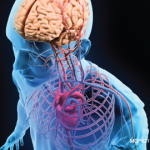“What they’ve shown is that with the reduction of epithelial-cell Fli1, the skin and esophagus become fibrotic”—and this was shown not to be dependent on T cells and B cells, he noted. “However, mTECs were reduced, and this led to a reduction of Aire. This led to a break of tolerance, autoreactive T cells, autoantibodies, and this resulted in autoimmune lung disease.”
He said the study is eye opening “if you have ever wondered why you get fibrosis and autoantibodies and interstitial lung disease” in scleroderma.
“Doesn’t that strike you as a little strange? I’ve always wondered about that. And this article gives a plausible explanation,” said Dr. Pope.
Adenosine & Osteoarthritis
In a study published in Nature Communications, researchers first showed that mice developed osteoarthritis (OA) when the adenosine receptor A2AR was knocked out.3 For better delivery, researchers embedded adenosine in liposomes and injected them into the joints of a mouse model of post-traumatic OA. They found that this prevented and treated their OA, proving that it acted via the A2A receptor by showing that the OA worsened when an A2A antagonist was injected at the same time.
The findings show potential for a new therapy, Dr. Pope said.
“Adenosine is released. It binds to the A2A receptor and it’s chondral protective,” he said. “If adenosine is not there, then that leads to the lack of protection against osteoarthritis.”
IL-17 Therapy, Sialic Acid & Autoimmune Disease
Dr. Pope said a paper in Nature Immunology shed light on why IL-17 therapy may not be as effective as hoped in autoimmune disease and how it may be used more effectively.4
Researchers used neuraminidase to “clip off” sialic acid from immunoglobulin G (IgG) antibodies and saw that the complexes then became much more inflammatory. When the sialic acid was put back, the inflammatory potential was reduced. They then found that removal of sialic acid from IgG in an arthritis mouse model treated with anti-IL-23 reversed the protection of the treatment.
In human patients who were ACPA positive and at risk of developing rheumatoid arthritis, they looked at the level of sialic acid on IgG. They found that those who went on to develop RA within 12 months had lower levels of sialic acid on IgG than those who did not.
The findings might present a therapeutic opportunity, Dr. Pope said. B cells normally produce the enzyme sialyltransferase, which puts sialic acid on IgG. But when influenced by IL-23-activated TH17 cells, this sialyltransferase—and thereby sialic acid—is reduced. It’s then that the immune complexes become much more pathogenic.


